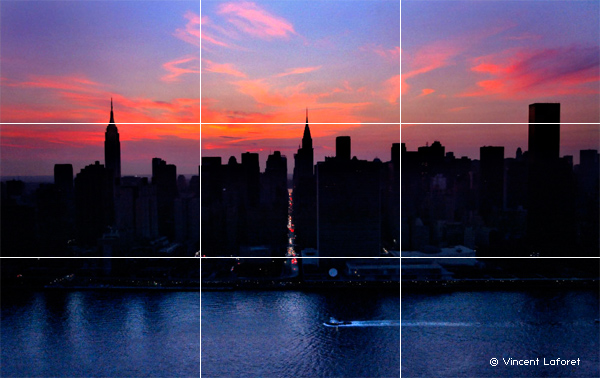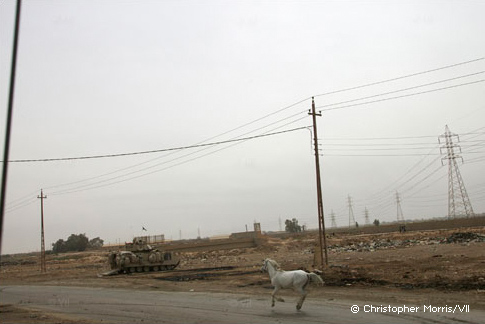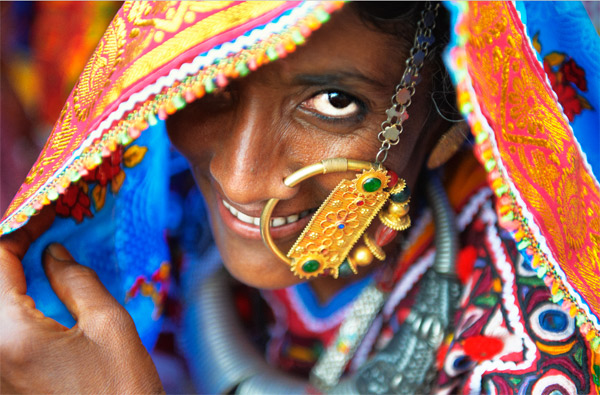Share
The Final Edit: 16 Things to Improve Your Photos – Perez Hilton Edition
You like photography? I like it too. I like it so much, I helped start a company that has “photo” in its name. I like “shelter” too, but th...

You like photography? I like it too. I like it so much, I helped start a company that has “photo” in its name. I like “shelter” too, but that is neither here nor there.
Today we’re talking about photography, and specifically, a few pointers for making your photography better. If you’re one of those fancy pants guys who already makes thousands of dollars every year from photography, then this post is not for you. This is for the person who believes there are still a few things to learn, and want to become a better photographer.
And just to prove my point, I’m illustrating all the “wrong” things with my photos that suck. You have a few photos that suck too. Don’t nod your head like that. I saw them! But hey, no need to be defensive. We’re using the power of positive thought to not suck because no one gets paid to suck unless you’re on reality TV. Remember, just like Tony Little told us, YOU CAN DO IT!
Lest you think I’m just spouting off like I usually do, let me clear the air. In order to get educated on what to write, I spent a week with our editors. And not just a few minutes here or there. I literally sat with them and reviewed over six thousand images to get a sense of the variety of images we were seeing, and a few trends started to become readily apparent. And when I say “trends” I really mean “things that we don’t want to be trends.” So let’s get started with my first installment of The Final Edit.
The Rule of Thirds & Composition
Never heard of the rule of thirds, huh? Neither has my grandmother. She’s so old, she thought Polaroid was new.

The rule of thirds is a compositional theory used in photography and other arts, and it basically helps you create points of interest. There’s no rule of halves. No rule of ones. There’s a golden rule, but I’m relatively certain that it has nothing to do with photography.
I talked to my buddy Vincent Laforet, about this whole composition thing, and I asked him, “Vince, what do you think makes you such a good photographer?” because he has one of them Pulitzer Prize thingies. He told me it’s because his parents made him take drawing classes as a kid. It should be no surprise that artistic principles are important in photography.
So listen Mozart, remember that composition is important.
Clean up your backgrounds
You have a great shot of a soccer player with his leg over his head with the ball right on the tip of his toe and a pained expression on his face, and in the background is some fat guy in a little coat eating a hot dog on the sidelines. And he is also in perfect focus.

The beauty of photography is that you can use a combination of aperture and focal length to selectively focus on the subject of the image. If you have an image that is so unique like Chris Farley on the sidelines the day of his death, we wouldn’t reject it. But if you have an average image with a messy background, we’ll drop it like it’s hot.
The world is not really that saturated
Who can’t resist pumping up the saturation a little bit? Sky looks a little bluer, flowers look a little more vibrant. And I remember Fuji Velvia like the next guy, but you are not Timothy Leary, so put the LSD filter down, and back off the saturation control, bro.

On the other hand, contrast is nice
Tonal range is a wonderful thing. Because between ebony and ivory, there’s a whole range of colors living together in perfect harmony. But if you decide to shoot under difficult lighting conditions – like shooting your favorite landscape into the sun — there goes the contrast.

If your name is Robert Rauschenberg, we’ll accept the photo. If not, make contrast your friend.
Zoom vs Digital Zoom
You went to Circuit City, you bought yourself a little camera, and you noticed that if you hold the zoom lever down for a few extra seconds the image gets really big on your viewfinder. That’s called digital zoom, and that, my friends, is like taking a page and enlarging it on a Xerox machine. Sure it’s big, but it looks like crap.
You’ve got two choices. 1) Get yourself a real telephoto lens. Pro: Sweet optics. Con: Expensive, or 2) Move your butt closer. Pro: Better pictures, burn calories. Con: none.
Digital zoom is a total no-no because of the image degradation. Zoom is ok.
There’s a whole bunch of photo purists who like to talk about “primes” (e.g. fixed focal length lenses) and bemoan the proliferation of zooms. This is because when you zoom in and out, it prevents you from moving your body, and then you forget about how a different focal length changes perspective and distortion.
Try forcing yourself to shoot at a fixed focal length for a few days so you can really start to understand how much distance and focal length affect the scene composition.
Dust on your sensor

Hey Monet. We’re artists over here, and I don’t think you meant to have that UFO in the sky. That big gray spot on your photo is dust that has lodged itself against the digital sensor in your camera, and we will summarily reject images that have this defect. You have three choices 1) use a product like the Arctic Butterfly to clean your sensor, or 2) Photoshop that bad boy, 3) restrict your photography to photos of Michael Jackson in a hermetically sealed room. Buyers can’t use images with dust imperfections, so we won’t accept them.
And if you work for Visible Dust, please send me a complimentary Arctic Butterfly for giving you free advertising.
Straighten the horizon
There are photographers out there who will tilt the horizon for effect. And I’d like to think that you’re one of them, but more often, the image is tilted because you weren’t paying attention. Building columns are vertically straight. Structures are usually flat even if the ground they’re built on are not. Take a moment to make sure the lines within your viewfinder are straight. Some newer cameras like the Nikon D3 even have leveling capabilities for people like me who perennially shoot at about 1 degree off axis. I blame it on the weight of my camera and my puny arms. But still.

Christopher Morris can tilt his camera. He can do it at 5.1°, but he shoots for VII.
Shooting up at buildings
Yo Calatrava, shooting buildings isn’t so easy. Accomplished architectural shooters, like Paul Warchol, use view cameras or tilt/shift lenses to control perspective, and prevent the keystone effect, which makes buildings look like they are falling away from the camera.

But before you buy that 8×10, you can do better by avoiding your wide angle lens while shooting straight up at a building. If you want to shoot straight up at a building, then I would suggest shooting the Apollo Theater during amateur hour because that’s what those images look like. Ba dump! I’ll be here all week folks.
Speaking of buildings, we have lots of pictures of famous landmarks like Big Ben, and that huge ferris wheel in London. If you want to shoot famous landmarks, search the site before you submit to see if we’re saturated with a particular subject matter. It’ll save you and us a lot of time.
Mad Libs Part 1: Just because you go somewhere “exotic” doesn’t mean the pictures are good
You finally saved up for that great vacation to [insert exotic place here] with the hubby. Took the camera along to shoot the natives of [insert exotic place here]. Can you believe all the natives doing the same stuff that we do except their skin color is [insert different skin color here] and they are wearing those cute little [insert native costume name here] just like at [insert theme park here].

Surprise! The rules of composition and proper exposure didn’t disappear when you left the [insert your country of residence]. Vince Laforet shot stuff in Pakistan, and by golly, it looks as awesome as his images from Hawaii (which is a part of the USA, btw). Similarly, the boring photos I took in South Africa are as bad the boring photos I took in New York.
And while poverty exists globally, shooting some bum on the street or an old tiny woman with 400 pounds of junk on her back in [insert exotic place] doesn’t turn you into James Nachtwey. On the other hand, if you take a pic of a little chinese kid taking a drag, send it on over because that is tragically funny.
My point – even though your subject may be an exotic place, person, animal, or ritual – our photo editors and buyers won’t want it if the image isn’t perfect.
Mad Libs Part 2: Close seats at sporting events doesn’t mean the picture is going to be good
Your boss scored some tickets to the state championship and somehow you got a pass to the sidelines. You took the camera along because you thought, “Hey, PSC probably needs some images of [insert sports].” You’re so close to [Circle one: David Beckham, Tiger Woods, Venus Williams, Tom Brady], you can practically smell the sweat.

Good thing you brought that motor drive because the PSC is definitely missing pictures of 1) referee butts, 2) backs of athlete hea ds, 3) football/basketball/baseball action photos with no ball in it. And that my fine friends was sarcasm.

My point: If you were a really good Italian cook, you would never assume that you could just try cooking Thai food, and it would be delicious on the first time. I don’t want to be a Debbie Downer, but you need to emotionally distance yourself from the excitement of being on the sideline with the actual quality of your photos. People that shoot for publications like Sports Illustrated have been shooting sports for years, and actually know things like the batting tendencies of Robinson Cano, and which way Devin Harris (Go Nets!) favors when driving to the hoop. They anticipate the action and know how to frame the shot – making it commercially viable.
No matter where you are, pictures of people’s back are boring
What is it about backs that make them so unexpressive? So incapable of expressing emotion the way, say, a face can? Ah, I pity the back.

Your caption sucks
This caption sucks: ” “
See anything? Neither did I because you didn’t write one. If a picture is worth a thousand words, yours is worth 983. So give me a sentence with the 17 missing words so I know what you photographed.
This caption sucks too: Detail of modern building
Denial isn’t a river in Egypt, Imhotep. Think about it from the standpoint of an image buyer. No one types in “modern building” and executes a search. They want to know the building name, location, architect, etc. Like Nell Carter said, “Gimme a break!”
And it’s a terrible assumption to believe that the sign you photographed which reads “Regional Department of the Royal Guard of the Knight’s Order” will give us enough info to know the who/what/when/where/why of the image. We don’t know where that is. We sit in an office all day and are completely sedentary. Hey, someone pass me a cookie.
Here’s one more because I know you like it: Dusk, Empire State Building, Fall
Yo Hemingway, that is not a sentence. You want brevity? How’s about: “More Effort!” Your caption — that string of words separated by commas — is a keyword. A caption is a sentence. Noun, verb, direct object. Or Noun verb. Or maybe it depends on what “is” is. Please write your captions in complete sentences.
Ok, last one, I promise: This is a picture of the subway I take to work. We all can appreciate mass transit!
I betcha thought you were being a little sassy by inserting the editorial comment and the first person point of view. Captions are no place for sass. Write in the third person, and keep it factual to answer the who/what/where/when.
Better captions help you sell your images. It’s a no brainer.
The sky isn’t white
You went to Italy. The tour bus took you to Florence and dropped you in front of Il Duomo. It’s high noon and your tour guide, Giovanni, tells you to meet back exactly at 1pm. So you hop off the bus and think, “Hm, I bet PSC needs a few pics of the Duomo.” You grab a quick Royale with Cheese and snap a picture while downing that coke (Isn’t amazing that McDonald’s tastes the same wherever you go?). Duomo looks great, but the sky is completely blown out to white. I don’t want to trivialize the whiteness of snow, but I am talking white.

But the sky is blue. And although clouds have white parts to them, they also have shadows and texture that give them dimensionality.
The really great photographers wait for the light for hours and days. But if you have to snap a quick one because, er, Fabio told you to get back on the bus, then maybe you ought to consider something like a filter. A skylight filter, a neutral density filter, a cross-polarizer filter. Maybe try bracketing or HDR so that you can retain detail in all parts of your image.
That Photoshop filter pack your mom bought you for Christmas
The Photoshop simpletons believe that retouching skin = Gaussian blur. They also believe that “Glowing Edge” and “Sumi-e” are your friends. But they are in third grade. Those preset filters are a photographic microwave; a push-button solution for something much more complex. Ratatouille didn’t microwave, and he won an Oscar despite being a rat. So don’t be like the Star Wars kid. He gots no control.
Also, that “P” setting on your camera doesn’t stand for “Perfection” it stands for “This robot camera of mine is doing all the thinking.”
We all hate reading, especially manuals, but you should force yourself to read your camera manual because “flower mode” isn’t really about shooting flowers, and that other thing is actually a pictogram for mountains, not just a bunch of triangles.
Now, I don’t wanna go off on a rant here, but photography is two things: 1) exposure, and 2) composition. If your camera is on “P” then you’re not doing #1. And if you haven’t considered framing a scene before hitting the shutter, then you’re not doing #2. And if you’re not doing #1 or #2, then the robots have won. And if the robots have won, then Spock is a good photographer. And if Spock is a good photographer, then it means my iPod has more creativity than you, and that’s pretty sad considering it’s a 2nd generation iPod.
Shooting a stationary object is not hard.
That Michelangelo statue isn’t moving. Plate tectonics move continents faster than that statue. So you might be surprised to learn how many blurry images we get of statues. Usually it’s because the photographer is shooting in a low light environment like a museum. And that’s why John Tripode invented the tripod. Ya got me. That was a joke. I have no idea who invented the tripod, but use one.
You should also become familiar with how your camera handles low light in general. A lot of the lower end cameras don’t do so well. We typically see poor shadow detail, funky colors, poor dynamic range, etc. If you haven’t invested a ton into your equipment, that’s fine, but don’t lose a critical eye when editing and submitting your photos.
And unless your name is Tom Berenger, you probably can’t hand hold a camera under 1/30th of a second consistently.
Silhouette
I don’t know who came up with the term “silhouette” to describe something shot against white seamless paper that isn’t really a silhouette. But listen up! Shooting against a wrinkled white b ed sheet under incandescent lights does not qualify as silhouette. That’s more like Terry Richardson, or some weird dude in Jersey shooting soft core in his basement.
For your background to go white, it needs to be exposed at least 1 stop over. If you go much over that, you’ll get flare. You need some strobes to do it, Edgerton. By the way, photo editors like to call it “Silo,” and they aren’t talking about a grain elevator.
Subject Matter that bugs photo editors
• Street performers (especially robot dudes, statue of liberty weirdos, etc)
• Pictures of signs
• People in costumes within amusement parks
• Civil War re-enactments
• The inclusion of the person who is so obviously your wife in a photo that you captioned “A woman walking down the boardwalk”
That’s all I’ve got for you today. But let’s get one thing straight. We are a team. We want you to give us better photos because they are more pleasurable to edit and they are easier to sell. And if we don’t continually improve our technique or want to become better, we’ll drown in mediocrity like EMF singing “You’re Crumbelievable.” We’re going to give it to you straight like a ruler because we’re all adults (except for those handful of underage kids that we let in).
And while there are exceptions to every rule I’ve stated, let’s be honest. We shouldn’t break the rules until we know the rules. Don’t break the rules because you’re ignorant – break them because you mean to.
Lastly, when someone asks you who your favorite photographers are, don’t just answer Ansel Adams and Annie Leibowitz. Nothing against those two because they are great photographers, but the history of photography is much more diverse, and people are doing really interesting things today. We should strive to learn about the photographers who preceded us, our contemporaries, and those that will follow because without Commodores, we wouldn’t have had *NSYNC. Without the Sugar Hill Gang we wouldn’t have T-Pain (5 million ringtone downloads can’t be wrong!). There’s so much information about photographers and photography online. The PhotoShelter blog is a good place to start, and I’m not talking about my stupid blog. I’m talking about Shoot! The Blog.
Remember, YOU CAN DO IT!


